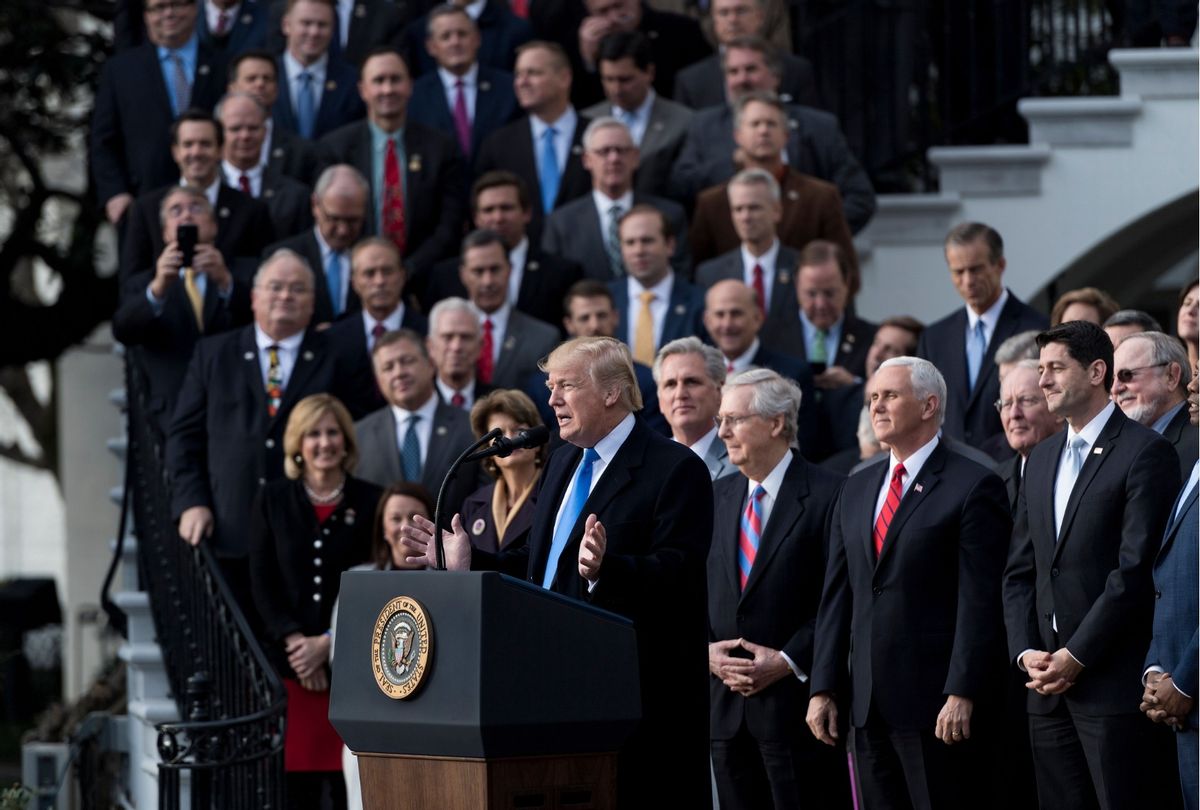Republicans' major tax cuts for corporations and the rich are overwhelmingly the drivers of current issues over the national debt, which the GOP is using as an excuse to force through cuts to welfare and government spending that are not contributing nearly as much to the debt, a new report reveals.
Over the past two decades, increases in the U.S.'s debt ratio, or the proportion of the national debt to the economy, have largely been driven by major tax overhauls done by Republicans under Presidents George W. Bush and Donald Trump, according to an analysis from the liberal Center for American Progress (CAP).
The cuts have added $10 trillion to the national debt since the Bush tax cuts were enacted in 2001 and Trump's in 2017, the report finds. In that time, the cuts have caused more than half — 57 percent — of the increase in the debt ratio. That proportion jumps to a whopping 90 percent if the stimulus packages following the Great Recession and COVID-19 recession are excluded from the analysis.
At the same time, spending has not contributed nearly as significantly to the debt ratio. Before the Bush tax cuts were made permanent in 2012, spending was projected to not exceed revenues for 65 years, the Congressional Budget Office (CBO) estimated — but, the next year, the CBO found revenues were expected to fall below program spending and the debt ratio would begin rising indefinitely.
Had Congress and the White House not implemented such drastic tax cuts from 2000 on, report author Bobby Kogan says, the national debt would remain stable indefinitely. As it is, Kogan has projected that the tax cuts will grow to surpass 100 percent of the increase in the debt ratio.
"Despite the rhetoric of runaway spending, projections of long-term primary spending have decreased, but projections of long-term revenues have decreased vastly more," the report says.
"The United States does not have a high-spending problem; it has a low-tax problem," Kogan concluded.
The findings are a clear demonstration of the Republican spin cycle wherein the party cuts government revenue, creating a spending "crisis." This causes the slowing of bureaucracy as government agencies lay off workers, and potentially cut welfare benefits; the negative perception of government services is then used to justify further tax cuts and spending cuts, and the cycle continues. The ultimate result of these cuts is the funneling of money from the working class, who are still paying a disproportionate proportion of their incomes into taxes compared to the wealthy and corporations.
This tactic is a major player in the current standoff over the national debt. Economists have warned that playing brinkmanship with the national debt, which officials predict will need to be raised this summer, would be disastrous for the fragile COVID economy.
But Republicans are doing it anyway, threatening to block the debt ceiling from being raised until Democrats fold to their demands while whining about the supposed irresponsibility of the national debt. These demands include proposals like cutting Social Security or, considering the vast unpopularity of that plan, less-splashy cuts to other programs that would nonetheless jeopardize the health of the climate and the working class.



Shares